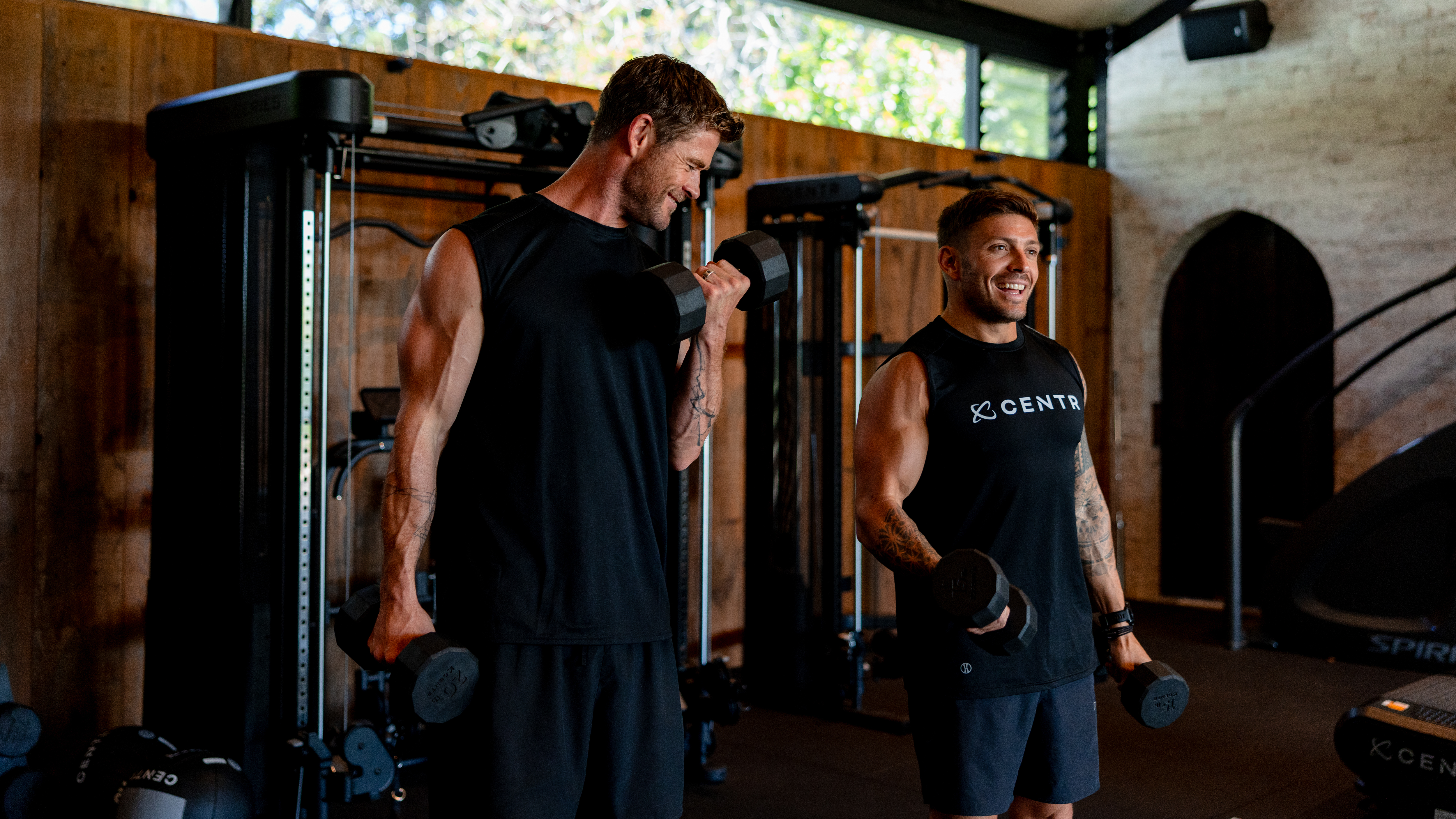IT band syndrome: how to avoid and treat this common running injury
Don’t let the dreaded IT band syndrome get in the way of your running goals - here’s everything you need to know…


As runners we ask a lot of our bones, joints, and muscles. And when they’re properly cared for, these bones, joints, and muscles help us traverse miles, achieve personal bests, and play a big role in maintaining our overall health.
It’s when they’re not looked after properly that injury may strike. So before you pull on the best running shoes for men or the best running shoes for women and head out for your next run, take some time to familiarise yourself with one of the most common running injuries: IT band syndrome.
What is IT band syndrome?
Runner’s knee is a general term that covers different injuries a runner may experience. One of the most prevalent of these is iliotibial band syndrome, commonly known as IT band syndrome or ITBS.
ITBS is an overuse injury that occurs when the iliotibial band – a thick band of tissue that runs from the hip to just past the knee – becomes inflamed. When the knee bends at around 30 degrees, the ITB compresses against the bone and pinches sensitive fat tissue.
This pinching causes a sharp pain felt on the outside of the knee when it bends during movement. The pain is generally stronger when running downhill because this action puts more strain on the hips and knees, and the muscles have to work harder to control the force.
The sharp, pinching pain on the outside of the knee is the main symptom of IT band syndrome, but other signs to look out for include tightness felt on the outside of the hips and experiencing a clicking feeling on the outside of the knee.
Causes of IT band syndrome
According to advanced practice physiotherapist Benoy Mathew, there are two main causes of ITBS. The first is when someone suddenly increases their mileage, doing too much too soon and putting strain on their muscles and joints.
Get the Fit&Well Newsletter
Start your week with achievable workout ideas, health tips and wellbeing advice in your inbox.
“We call ITBS an overuse injury caused by training errors. I’ve never seen someone who has this who hasn’t recently made a change to their training,” he says.
Benoy adds that he commonly sees IT band syndrome in clients who have started training for a half marathon or marathon, jumping into an unrealistic program not suited to their activity level or current mileage. So if you're looking to increase your distance or speed, make sure you do so safely. Alternatively, if you're new to running, try starting out with a tried-and-tested program like Couch to 5k.
The other main cause of ITBS is weakness around the hip muscle. “The knee is a slave to the hip, so it will be affected by any issues around the hip muscle and around the side of the hips like the gluteus medius.”
Who does IT band syndrome typically affect?
ITBS is an injury that any runner can experience, from beginners who suddenly go from 0 to 100, to seasoned athletes who aren’t training properly.
What's more, unlike other sports injuries like fractures or bone injuries, it’s equally as likely to affect a younger person as it is an older runner.
However, women are more likely to experience ITBS as they have a wider pelvis, which can affect the rotation of the hips when running, potentially placing more stress on the IT band.
How to avoid IT band syndrome
The best way to avoid ITBS is by increasing your mileage gradually and by strengthening your hips and glutes.
When it comes to adding more miles to your training, the 10-percent rule is a good one to follow; it suggests you increase your weekly mileage by only 10 percent of the previous week. So if you run a total of 20 miles one week, the next week you can increase to 22 miles (10 percent of 20 being two). This allows your body to get used to the new activity in a sustainable way.
Incorporating a few simple exercises into your workout routine will help to build strength in your hips and glutes. Benoy’s favorite exercises are lateral crab walks, single leg deadlifts, and Bulgarian split squats. These will also help with stability and balance, which will make you a more efficient runner.

IT band syndrome treatment
ITBS isn’t the kind of injury that will go away on its own after a while. If the underlying issues aren’t treated, the pain will persist. Fortunately it’s quite straightforward to treat and to prevent it from becoming a chronic issue.
It can help to take an anti-inflammatory drug like ibuprofen to manage the pain in the short term, as well as applying a cold compress to the knee. Resting is important at this stage too, but according to Benoy, this doesn’t necessarily mean stopping running all together.
“In most cases you don’t have to stop running totally – just reduce the miles. If it’s excruciating then take a few days off.”
Foam rolling can help to ease some of the tension around the muscles, but don’t roll directly where the pain is. Instead, focus on the surrounding areas like your glutes, quads, and tensor fasciae latae (TFL) – a small muscle at the top of your thigh. Take a look at our pick of the best foam rollers if you don’t already own one.
Introducing some cross-training into your routine is also crucial to the treatment and prevention of IT band syndrome, in order to introduce variety of movement into your routine. This can be as simple as mixing up your running with cycling, swimming, yoga, pilates, or weight-training.
If your treatment is managed well, you should be ITBS-free in six to eight weeks. Most people who experience the injury won’t need to see a physiotherapist and the pain should subside once you stop running as much, but do seek out professional help if you’re concerned.
IT band syndrome: the bottom line
IT band syndrome is an overuse injury that occurs when the iliotibial band becomes inflamed.
The most common symptom is sharp pinching pain in the knee. It can affect any runner regardless of age or experience, although women are more prone to experiencing it.
The typical cause of IT band syndrome is suddenly and dramatically increasing the length, duration or intensity of your runs. It can be avoided by working up to new running goals using the 10-percent rule.
Treatment of IT band syndrome involves steps to reduce to inflammation (such as over-the-counter drugs and compression), rest, foam rolling and the introduction of cross-training into your routine. Anyone particularly concerned should speak to a doctor.
Ultimately, remember that running well is more than just running every day and logging more miles each time. It means running strong, looking after bones, joints, and muscles, and staying injury-free.
Want more running advice? See our running form guide and our overview of why every runner should get a gait analysis. You could also check out our pick of the best running shoes for men, the best trail running shoes and the best running watches.
Get Fit for 2021 with Fit&Well
As the sun rises on a brand new year, Fit&Well is here to help put last year behind you and make 2021 your happiest, healthiest yet. Here at fitandwell.com, we’ll be bringing you a wealth of workouts, diet plans and expert advice throughout January to help kick-start your health and fitness goals.
Nupur is a freelance journalist who covers travel, lifestyle, health, fitness, and nutrition. She has previously written for titles including Stylist, Where London, London Planner, Vacations & Travel, and Hey Gents. A keen runner with a fondness for running tourism, she loves knocking back a few early morning miles whenever she visits somewhere new and has clocked up distances in the UK, Germany, Italy, Australia, Japan, and Vietnam. An avid believer in the idea of food as medicine, she can often be found researching new ingredients to include in nutritious plant-based meals. When she’s not doing any of the above, Nupur is usually curled up on the couch trying her hand at a new crochet project.
-
 Build blockbuster arms and abs with Chris Hemsworth's go-to dumbbell circuit
Build blockbuster arms and abs with Chris Hemsworth's go-to dumbbell circuitAll you need are adjustable dumbbells and 20 minutes
By Sam Rider Published
-
 Forget crunches—if I wanted to improve core strength I'd do this neck-friendly Pilates workout
Forget crunches—if I wanted to improve core strength I'd do this neck-friendly Pilates workoutAnd it takes just five minutes
By Maddy Biddulph Published
